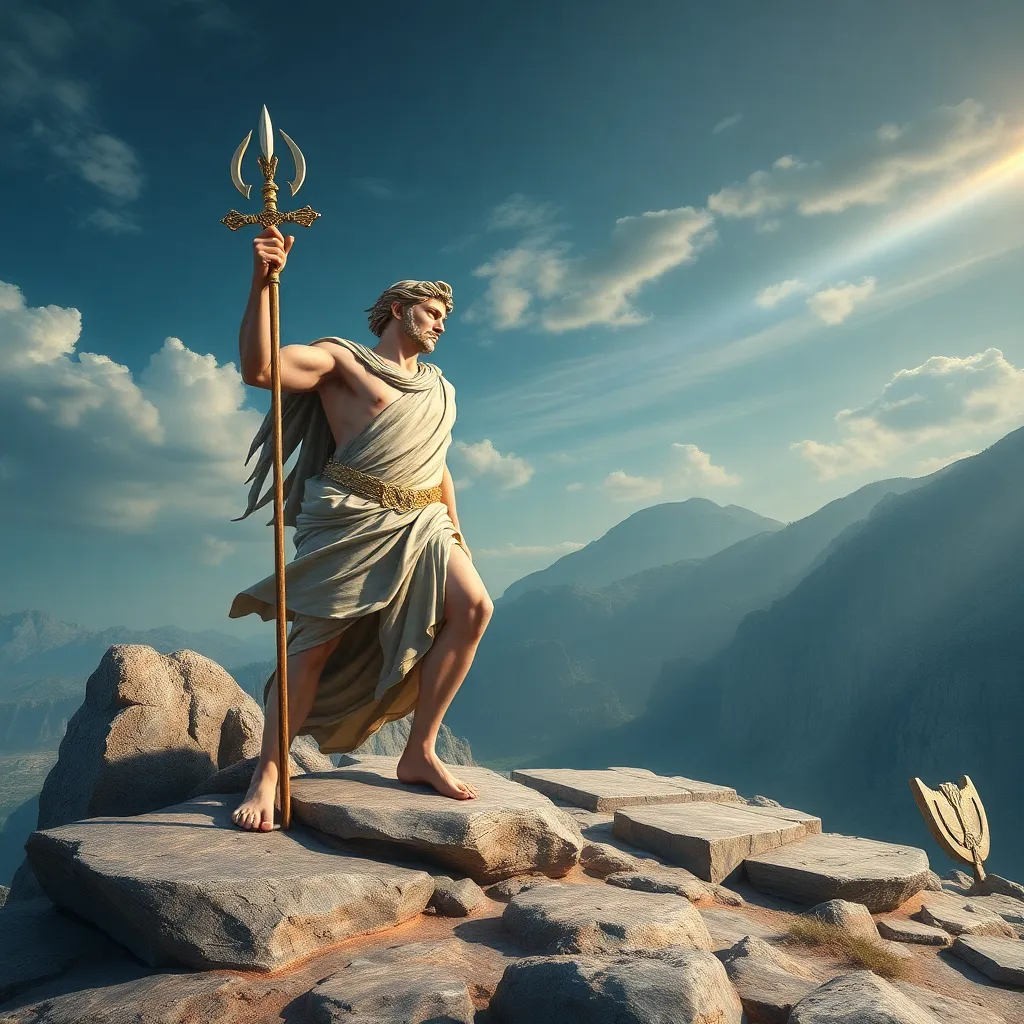Perseus and the Myth of the Hero’s Journey: Archetypes in Action
I. Introduction to the Hero’s Journey
The Hero’s Journey is a narrative framework that outlines the typical adventure of a hero. This archetypal structure has been identified in various cultures and stories throughout history. It involves a hero who goes on an adventure, faces challenges, and ultimately returns home transformed.
Joseph Campbell, an American mythologist, introduced the concept of the monomyth, which describes a common pattern shared by many heroic stories. His work highlights the stages of the Hero’s Journey, illustrating how these archetypes resonate deeply within human consciousness.
Understanding these archetypes is crucial in mythology as they provide insight into human behavior, morality, and the universal themes that connect us all.
II. The Call to Adventure: Perseus’ Origin Story
Perseus, one of the most celebrated heroes in Greek mythology, is the son of Zeus and Danaë. His origin story is steeped in tragedy and foreboding. According to prophecy, Danaë’s father, King Acrisius of Argos, would be killed by his own grandson. Fearing this fate, Acrisius imprisoned Danaë in a bronze chamber to prevent her from having children.
However, Zeus, in the form of golden rain, reached Danaë, resulting in the birth of Perseus. When Acrisius discovered the child, he cast both mother and son into the sea in a wooden chest. They were later rescued by a fisherman named Dictys on the island of Seriphos.
Initially, Perseus was reluctant to embrace his destiny. Yet, when King Polydectes, Dictys’ brother, sought to marry Danaë, he devised a plan to send Perseus on a nearly impossible quest: to bring back the head of Medusa, a Gorgon whose gaze could turn anyone to stone.
III. The Mentor: Guidance from Athena and Hermes
In the Hero’s Journey, the mentor is a crucial figure who provides guidance and gifts to the hero. For Perseus, this role was fulfilled by the goddess Athena and the god Hermes.
- Athena: She bestowed upon Perseus a polished shield that allowed him to view Medusa’s reflection, thereby avoiding her petrifying gaze.
- Hermes: He provided Perseus with winged sandals, enabling him to fly, and a sword to defeat Medusa.
The mentorship of Athena and Hermes illustrates the importance of divine intervention in the hero’s journey, emphasizing that no hero achieves greatness without support and guidance.
IV. Crossing the Threshold: The Departure from Home
As Perseus accepted his quest, he underwent a significant transformation from an uncertain youth to a determined hero. This stage is often referred to as crossing the threshold, where the hero leaves behind the safety of home.
Perseus’s departure from Seriphos marked his entry into the realm of the unknown, filled with danger and uncertainty. This journey symbolizes the universal experience of venturing into the unfamiliar to achieve personal growth and transformation.
V. Trials and Challenges: Encounters with Monsters
Perseus faced numerous trials and challenges on his quest to obtain Medusa’s head. One notable encounter was with the Gray Women, three sisters who shared one eye and one tooth among them. Perseus cleverly stole their eye, forcing them to reveal the location of the Nymphs who possessed the tools he needed for his quest.
The trials Perseus faced, including outsmarting the Gray Women and ultimately confronting Medusa, embody the theme of overcoming fear and adversity. Each challenge strengthened his resolve and prepared him for the ultimate confrontation.
VI. The Triumph and Transformation: Slaying Medusa
The climax of Perseus’ journey came with his confrontation with Medusa. Utilizing the gifts from Athena and Hermes, he approached her while using the shield to avoid looking directly at her. With his sword, he beheaded Medusa, showcasing not only physical courage but also cleverness.
The acquisition of Medusa’s head was not merely a victory over a monster; it became a powerful symbol. Perseus could use her head as a weapon, turning enemies to stone, thus representing his growth and newfound power. This moment marked a significant transformation in Perseus, solidifying his status as a hero.
VII. The Return Home: Redemption and Reconciliation
After successfully obtaining Medusa’s head, Perseus embarked on his journey home. However, this return was not without its challenges. On his way back, he encountered various foes, including the sea monster Cetus, which he defeated to save Andromeda, a princess destined for sacrifice.
Ultimately, Perseus returned to Seriphos, where he discovered that King Polydectes had been harassing his mother. In a dramatic turn of events, Perseus used Medusa’s head to turn Polydectes and his followers to stone, fulfilling the prophecy of his grandfather Acrisius in a roundabout way.
The fate of Acrisius eventually came to pass, as during a sporting event, Perseus accidentally struck him with a discus, leading to Acrisius’ death. This tragic fulfillment of the prophecy reflects the inescapable nature of fate in Greek mythology.
VIII. Conclusion: The Legacy of Perseus and Heroic Archetypes
The story of Perseus serves as a profound reflection on the Hero’s Journey and the archetypes that shape our understanding of heroism. His legacy continues to resonate in modern storytelling, illustrating the timeless nature of these themes.
In contemporary narratives, we still see characters that echo the archetypes represented by Perseus: the reluctant hero, the wise mentor, and the transformative journey. The universal themes of courage, sacrifice, and the struggle against fear remain relevant, reminding us all of our potential for growth and transformation.
In conclusion, the journey of Perseus is not just a tale of ancient Greece; it is a representation of the human experience, showcasing the enduring nature of the heroic archetype in all cultures and times.




